NIL
Matt Rhule on recruiting against bigger NIL offers: ‘Bad teams have more money’
While at Nebraska, head coach Matt Rhule knows that he has plenty of resources. In the NIL era, however, there can still be times when you’re trailing. That’s especially the case when recruiting against desperate teams. Rhule explained the relatively simple logic to HuskerOnline. Teams that have been struggling on the field are more desperate […]

While at Nebraska, head coach Matt Rhule knows that he has plenty of resources. In the NIL era, however, there can still be times when you’re trailing. That’s especially the case when recruiting against desperate teams.
Rhule explained the relatively simple logic to HuskerOnline. Teams that have been struggling on the field are more desperate to win. So, they’re willing to spend more money on NIL and recruiting, especially in the Transfer Portal. Therefore, they’re setting the market.
“I think the biggest message I can put out there, and this was said to me by Troy Vincent, who works for us in the personnel department,” Rhule said. “Obviously, his dad is the number two guy in the National Football League. The thing he said to me was we always have to remember the desperate team sets the market. So, young people are looking for lots of different things, but if they’re looking just for finances, bad teams have more money because they don’t have to spend as much on everybody else.”
Oftentimes, NIL is looked at as a way for teams to add transfers and high school recruits. However, for good teams, NIL is just as much about retaining talented players who are already on their rosters and avoiding poaching from those other talented teams. However, struggling teams don’t need to worry about that because they’re typically not worried about retaining players who underperformed.
“Good teams have their money allocated to other good players with lots of options. I tell our players, if you’re a good player on this team and you’ve produced, you’re going to get hit up in the portal every single time. You should not be like, ‘What’s happening?’ You’re gonna get hit up. So, a lot of our guys got hit up,” Rhule said.
“We’ve allocated the resources as best we can. So, we didn’t see a lot of need or we didn’t have a lot of resources left to go out and say, ‘Hey, let’s get a bunch of guys,’ because I think we’ve tried to make sure we take care of the guys we have here.”
None of that is to say Matt Rhule and Nebraska have ignored the Transfer Portal. The Cornhuskers have the 40th-ranked transfer class in the 2025 cycle, according to the On3 College Football Team Transfer Portal Rankings. That’s with 17 players joining the program.
Nebraska begins its regular season on August 28th with a neutral-site game against Cincinnati. That should help to give Rhule a good idea if he spent his NIL money wisely this offseason.
NIL
Wisconsin suit against Miami alleges tampering with Xavier Lucas
Jeremiah Smith, Ryan Williams on cover of EA Sports College Football ’26 EA Sports chose Ohio State’s Jeremiah Smith and Alabama’s Ryan Williams to be on the cover of College Football ’26. We talk to the athletes about what this moment means to them. The latest first has come to the current era of college […]
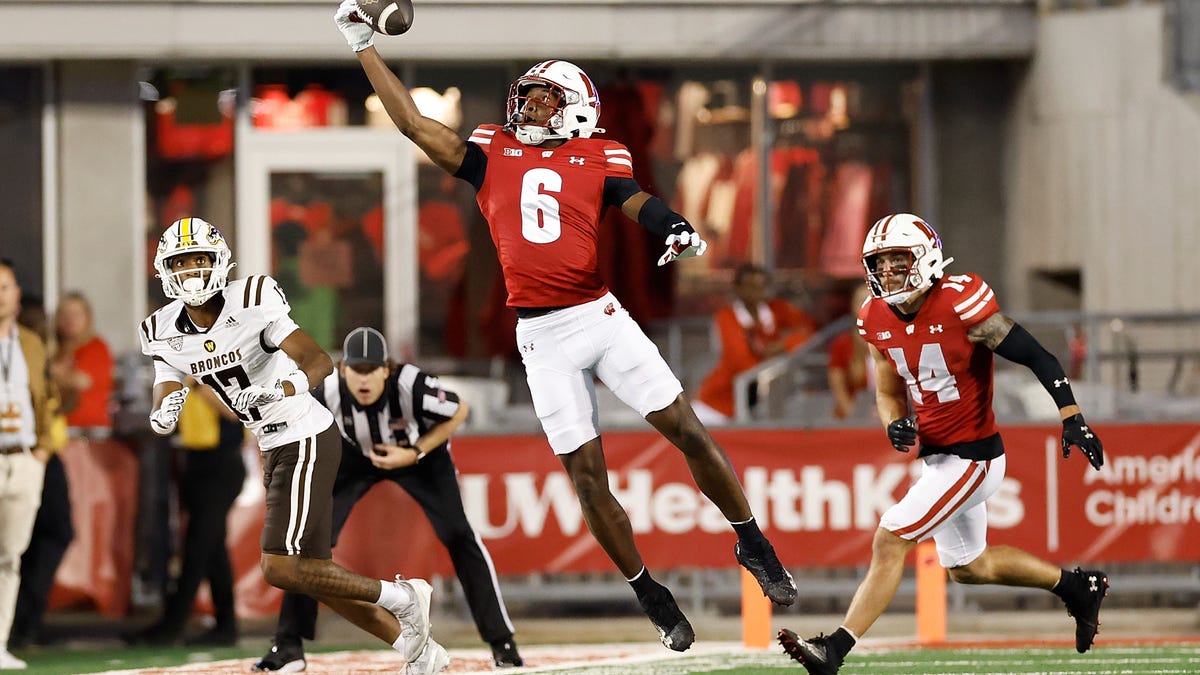
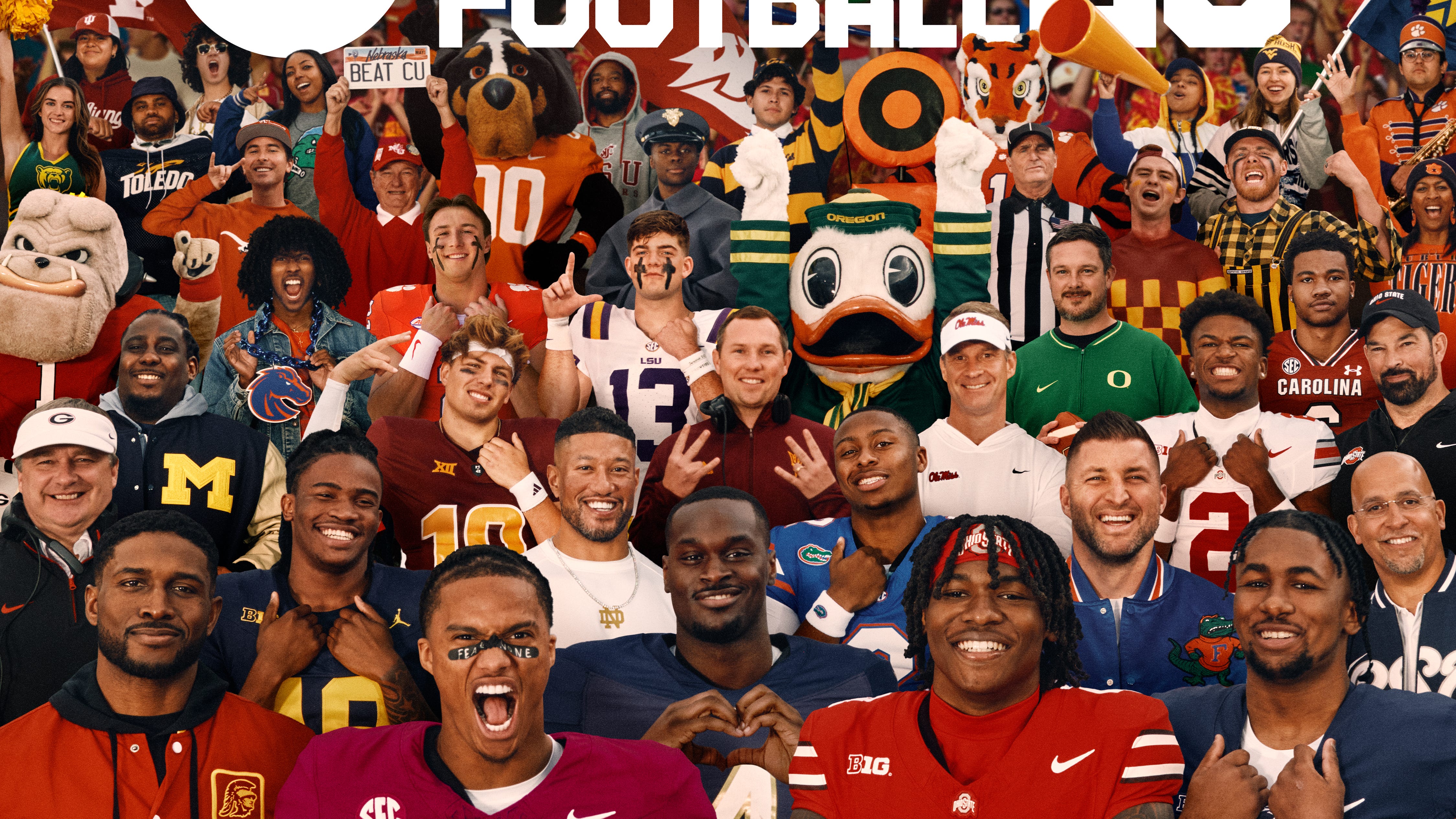
Jeremiah Smith, Ryan Williams on cover of EA Sports College Football ’26
EA Sports chose Ohio State’s Jeremiah Smith and Alabama’s Ryan Williams to be on the cover of College Football ’26. We talk to the athletes about what this moment means to them.
The latest first has come to the current era of college football, with name, image and likeness (NIL) reigning supreme.
Wisconsin football and its NIL collective filed a complaint in state court on June 20 against Miami over alleged recruiting interference, according to a report from Yahoo Sports’ Ross Dellenger. The move is the first of its kind and a potentially precedent-setting action.
The situation revolves around former Wisconsin defensive back Xavier Lucas, with the school claiming that Miami interfered with Lucas’ revenue-binding contract with the Badgers and their NIL collective. Lucas left Wisconsin for Miami in January.
Lucas notably transferred to Miami without entering his name in the transfer portal, according to numerous reports in January. Lucas had announced his intention to enter the portal in December, but Wisconsin reportedly refused to put his name in the portal after he had already signed a contract with the school.
The documents obtained by Yahoo Sports claims Miami communicated with Lucas despite knowing the defensive back had already signed a contract with Wisconsin.
“Miami interfered with UW-Madison’s relationship with Student-Athlete A (Lucas) by making impermissible contact with him and engaging in tampering,” the suit writes, according to Yahoo Sports
“We stand by our position that respecting and enforcing contractual obligations is essential to maintaining a level playing field,” Wisconsin said in a statement to Yahoo Sports. “In addition to our legal action, we will continue to be proactive to protect the interests of our student-athletes, our program and the broader collegiate athletics community.”
Dellenger also reported the Big Ten support Wisconsin on the matter.
Revenue sharing was approved in a House settlement on June 6, allowing for schools to directly pay athletes across all sports. The Wisconsin-Miami case could serve precedent for future situations of alleged or potential tampering.
Lucas finished his freshman season at Wisconsin with 18 total tackles, a sack and an interception. The 6-foot-2 defensive back from Pompano Beach, Florida, withdrew from classes at Wisconsin and enrolled at Miami as a student in order to skirt the NCAA transfer rules regarding enter your name in the transfer portal during the two separate portal windows.
Lucas reportedly signed a two-year revenue sharing contract with Wisconsin, according to Yahoo Sports. The contract binds the player’s non-exclusive rights to the school, allowing it to market their NIL. The contract forbids the player’s NIL rights to be used by other schools.
NIL
Revealing the All-Quarter Century Team for the UNC Basketball program
Now that we’re a quarter of the way through the 21st Century, it’s time to look back at the past 25 years of Carolina basketball. The UNC basketball program has had some elite talent come through Chapel Hill, making it extremely difficult to name an All-Quarter Century Team. In fact, you probably could identify quite […]
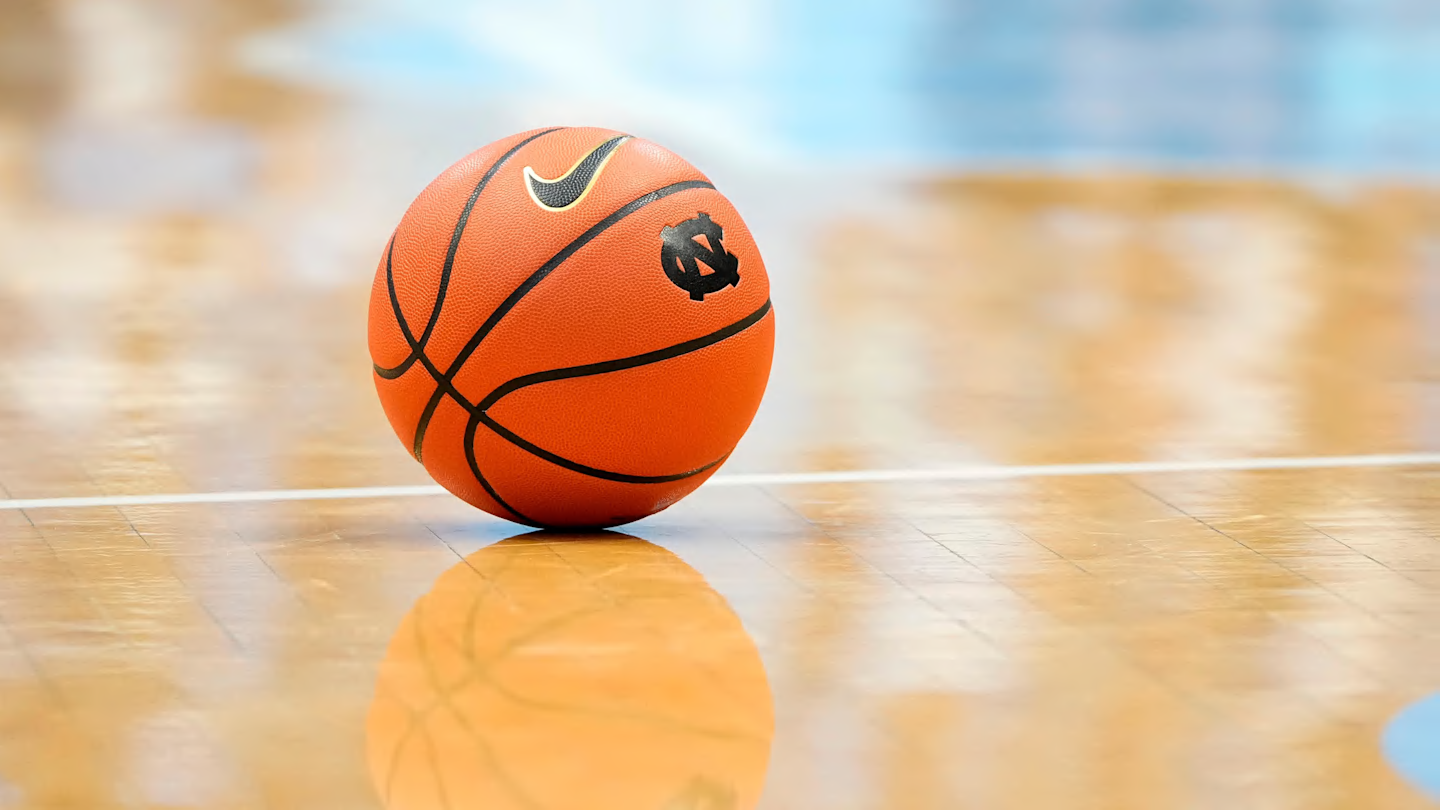
Now that we’re a quarter of the way through the 21st Century, it’s time to look back at the past 25 years of Carolina basketball.
The UNC basketball program has had some elite talent come through Chapel Hill, making it extremely difficult to name an All-Quarter Century Team. In fact, you probably could identify quite a few players who missed our list but would’ve made the squad for most other college basketball programs.
As difficult as it was, we came up with our team, comprised of 13 players.
How did we decide on 15? Well, we know that Division I programs have 13 scholarships to work with every year, but rosters are typically as many as 15 (with walk-ons). So, we took the liberty in using the spots wisely, as we all know there are more than 15 Tar Heels that could make a strong case to be on this list!
When compiling our roster, we considered several areas. Obviously, you’re not making this squad if you’re not talented, but there are other variables we considered, such as (but not limited to):
-College Production
-Team Success (during their time in Chapel Hill)
-Overall Legacy
-Years Spent at UNC (yes, long-term players benefited more than one-and-dones, but there is at least one exception)
As you probably already expected, this wasn’t an easy task! However, we’ve come up with our team, and we want to hear what you think!
Without further adieu… here’s your UNC Basketball All-Quarter Century Team.
Starters

Point Guard: Ty Lawson (2006-2009)
The point guard position was arguably the toughest to figure out, as both Ty Lawson and Raymond Felton are very strong options to start on this squad.
Lawson gets the edge based on a more decorated resume, as his Consensus All-American nod and ACC Player of the Year Award gave him the edge over Felton, a player who earned three first-team All-ACC selections.
I mean, this is a really good problem to have, even though the choice is a difficult one to make!

Shooting Guard: Wayne Ellington (2006-2009)
You could make the case that the 2009 Tar Heels don’t win the national championship without Ellington. The sharpshooter knocked down 7 of his 10 shots from beyond-the-arc during the Final Four, earning Most Outstanding Player honors.
Ellington was never afraid of the big moment, putting together his best performances in ACC and NCAA Tournament play. He was an NCAA All-Tournament and All-Region selection, and was named to the All-ACC Tournament team on three separate occasions.
When you put on the Carolina blue, you must be ready for the big-time spotlight. Wayne Ellington was more than ready for it.

Small Forward: Harrison Barnes (2010-2012)
Still to this day, Harrison Barnes is the highest-ranked recruit that the UNC basketball program has landed. Fortunately, he lived up to the hype, earning ACC Rookie of the Year honors (becoming the ninth player in program history to do so).
He followed his stellar rookie season up by leading the Tar Heels to the ACC regular-season title, the ACC tournament finals, and the Elite 8 of the NCAA tournament.

Power Forward: Tyler Hansbrough (2005-2009)
Without a doubt, Hansbrough was the easiest pick for this team. The 2008 National Player of the Year, “Psycho T’s” jersey isn’t retired by coincidence: he left the program as the all-time leading scorer and rebounder and led the UNC basketball program to a national championship.
Even considering all the elite players who have worn the Carolina Blue over the years, it’s hard to find a player (or players) with a better college career as a Tar Heel than Hansbrough.

Center: Sean May (2002-2005)
A dominant big man in the post, Sean May is best known for leading the UNC basketball program to the 2005 national title, earning Most Outstanding Player honors for the tournament.
Let’s face it: opposing teams are going to STRUGGLE to out-rebound the duo of Sean May and Tyler Hansbrough!
Reserves (in alphabetical order)
Armando Bacot (2019-2024)
Bacot served as a dominant force for the UNC basketball program during his five years in Chapel Hill. The program’s all-time leading rebounder, Bacot was a double-double machine, playing a major role in the Tar Heels’ trip to the 2022 national championship game.
Sure, he benefitted from having an additional season of eligibility due to COVID. However, you can’t take away from the fact that he was the face of the UNC basketball program during his time on campus, putting together a career for the record books.
Joel Berry II (2014-2018)
From a guy who doubted whether he belonged in Chapel Hill to one who has his No. 2 jersey hanging in the Dean Smith Center rafters, Joel Berry II is a testament to what hard work, loyalty, and dedication can do for you.
Berry developed into an All-ACC caliber guard during his time in Chapel Hill, putting together an outstanding resume to look back on. He played a integral part in the Tar Heels’ national title team in 2017, helping avenge the devastating loss in the finals a season prior. He earned Most Outstanding Player honors for that title run, proving just how valuable he was in guiding the UNC basketball program to another title.
Raymond Felton (2002-2005)
Honestly, you could really mix-and-match with Lawson and Felton at the point guard spot among the starting unit.
Felton was a All-ACC Selection each season he spent in Chapel Hill, taking the reins of the point guard position from the moment he arrived on campus. Consistency was his biggest asset, as he provided consistent presence offensively and defensively. While he could score the basketball, one of his best traits was facilitating the rock, assisting in finding open looks for his teammates to capitalize on.
Joseph Forte (1999-2001)
Forte’s two seasons in Chapel Hill were absolutely brilliant.
As a freshman, Forte was named th ACC Rookie of the Year. He followed that season up by being tabbed as the ACC Player of the Year and a Consensus First-Team All-American, averaging 20.9 points per game while shooting 45% from the floor (including 37.7% from beyond-the-arc).
Among this elite group of talent, Forte might just be the best pure scorer that this team has to offer.
Danny Green (2005-2009)
Green might not have the individual accolades that other on this list have, but he is the definition of what an all-around “glue guy” should be.
In order to be successful as a team, you need guys like Green: someone who is willing to do whatever the team needs to succeed. This shows in his overall stats as a member of the UNC basketball program, as he is the only player in Tar Heel history to record 1,000 points, 500 rebounds, 250 assists, 150 threes, 150 steals, and 100 blocks.
Green did anything the Tar Heels needed him to (whether he was coming off the bench of starting), and ended up being a major contributor for the 2009 title team.
Justin Jackson (2014-2017)
The 2016-2017 season for Justin Jackson was one of the best individual seasons we’ve seen from a member of the UNC basketball program.
Jackson took his game to a whole new level, averaging 6.1 more points per-game than he did as a sophomore. He earned the ACC Player of the Year Award and was a Consensus First-Team All-American in a season in which the Tar Heels captured their sixth national title.
Brice Johnson (2012-2016)
Johnson was dominant during his senior season at North Carolina, earning Consensus All-American honors. He finished the season averaging a double-double, setting new career highs in points per game (17), and rebounds (10.4), shooting the basketball at an elite 61.4%.
A two-time All-ACC and All-ACC Tournament honoree, Johnson was your prototypical big man to come through the program during the Roy Williams era. Williams had a knack for easing his big men into action, as the steady growth was evident over their four years with the program.
Johnson saw his role increase each season, ending his college career as arguably the country’s best big man and an eventual first round pick in the 2016 NBA Draft.
Kendall Marshall (2010-2012)
Marshall was the best passer to play for the UNC basketball program over the past 25 seasons, setting the program’s single-season assist record of 351. He absolutely crushed the previous ACC single-season mark, a record that was previously set by Craig Neal of Georgia Tech (311 assists).
If it wasn’t for a cheap shot (courtesy of Creighton), the Tar Heels were in a prime position to make a deep NCAA Tournament run. However, Marshall’s fractured wrist derailed the Tar Heels’ title hopes, as they went on to lose to Kansas in the regional finals while their point guard was sidelined.
Marshall became the third UNC basketball player to win the Bob Cousy award, joining fellow All-Quarter Century team selections Felton (2005) and Lawson (2009).
Marcus Paige (2012-2016)
Paige is a guy that UNC basketball fans wish had a better ending to his career. While his acrobatic shot (followed by a heartbreaking buzzer-beater by Villanova’s Kris Jenkins) is a sequenece that haunts us all to this day, Paige was stellar in his four-year career at North Carolina.
A three-time captain, Paige concluded his career with the UNC basketball program ranking No. 11 at in scoring (1,844 points), first in three-pointers made (299), third in steals (203), fourth in free throw percentage (.844) and eighth in assists (602).
Marvin Williams (2004-2005)
Williams was a “one-and-done” in Chapel Hill, but there’s no possible way you could leave him off this list.
Serving as the Tar Heels sixth man (yes, that’s just how good that 2004-2005 squad was!) Williams earned ACC Rookie of the Year Honors. His famous tip-in against Illinois in the national championship game is a play UNC basketball fans remember fondly, capping off his tremendous lone season at North Carolina.
This dude was so good, that he went on to be the No. 2 overall pick in the NBA Draft after not starting a single game at the college level!
NIL
Evanson
Evanson: The transfer portal is not just an NCAA problem, it’s become a prep one as well Published 4:00 am Friday, June 20, 2025 The chase for state championships has led to an epidemic of transfers in this state, and sports columnist Wade Evanson doesn’t like what he sees. (Jaime Valdez/Portland Tribune) The transfer portal […]


Evanson: The transfer portal is not just an NCAA problem, it’s become a prep one as well
Published 4:00 am Friday, June 20, 2025
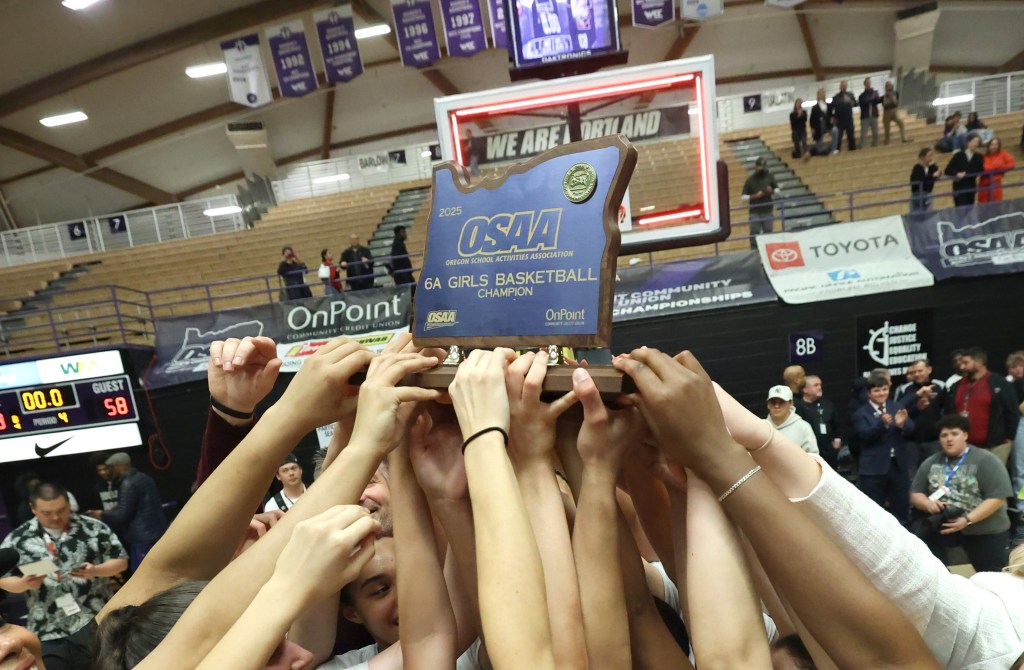
- The chase for state championships has led to an epidemic of transfers in this state, and sports columnist Wade Evanson doesn’t like what he sees. (Jaime Valdez/Portland Tribune)
The transfer portal is open. No, not the NCAA’s official window for student-athletes to relocate to a more lucrative/advantageous situation, but rather the unofficial one that has high schoolers doing the same in the interest of…well…I’m not exactly sure?
This is a delicate topic for a number of reasons, but one that – while not entirely new – has become exponentially more prevalent in recent years.
Players from area schools are leaving their school and often their district seeking greener pastures, and while there are rules prohibiting such, little is being done to curb what’s become the new norm.
I’ll be honest, I don’t like it.
If you move, you move. You can’t stop someone from picking up and moving out, be it for practical reasons or not. But what you can do is govern, and in many cases simply enforce the rules set forth with that governance in mind.
There doesn’t seem to be much of that going on, and therein lies the problem.
Circumventing the transfer rules isn’t new, for even in the “olden days” there were tales of fabrications in the interests of getting player-A to school-B.
There was the mystery address, aunt and uncle, and/or friend or even simply a mailbox that would place player-A in the district he or she so desired. But examples of such were few and far between compared to what now annually feels like the running of the bulls.
Now is that time.
With summer league basketball underway, along with summer workouts for football, soccer and volleyball on the horizon, new players now make up new teams, and for the first time since the end of the 2024-25 school year, outsiders are getting a glimpse of what next year’s high school squads will look like come December. And while there’s talent to be found throughout Oregon, many of the state’s best won’t be playing against, but rather with one another as a part of a team constructed not over time, but rather as the result of little more than a desire to do so.
When I stated earlier that this is a delicate topic, I did so due to the sensitivity that comes with the people involved – the kids.
While I could point to what seems like countless examples of prep mercenaries leading teams to league or state titles, I won’t. Nor will I single-out the coaches and/or programs that have not only embraced, but have been more than willing participants.
I’ve no interest in playing the “gotcha” or blame game, and I have even less interest in pointing fingers and rendering verdicts on cases for which I lack all of the necessary information to do so.
Sometimes people simply move.
Other times academic motivations are at play.
That’s life, and I’d be a fool not to acknowledge such pertaining to transfers in general.
But beyond the necessary, lies a mountain of unnecessary reasons kids are jumping from one school to the next like NBA superstars chasing championship rings.
Winning. Coaching. Playing time. All things you hear regarding the departure and subsequent arrival of those seeking more of any or all of the aforementioned.
And that’s great for them, but what about everyone they left behind.
We live in a time defined by that very word’s last two letters.
Me-first has not only become popular, but championed by a sect of society that’s somehow made selfishness a virtue.
I’m not going to waste your time with what I feel are countless examples of such, but will tell you that in a world so concerned with the individual, there seems to be little to no concern for the individuals who will suffer in the wake of making one happy.
For every player that leaves for bigger and better, there are a dozen others left with now lesser and worse. A group of kids scrambling to work with what is now, opposed to what was supposed to be.
And for what, winning?
The best part of winning is knowing what it took to make it happen, and if the road to victory is measured only by the distance from one school to the next, how rewarding is that?
I had a conversation with a prominent area coach last season about this very thing. They had not yet been either the victim or beneficiary of the transfer game, and weren’t all that interested in changing that. But they were cognizant of the growing epidemic and begrudgingly said they might have to consider playing that game if they wanted to someday taste the ultimate spoils.
It didn’t matter that they had a great program, nor that it was one built on a foundation of homegrown kids, because what had always been a marathon has recently become a sprint, and it’s hard to win a 100 meter dash with kids who’ve been running a 5k.
Maybe I’m wrong. After all, we do live in an eat or be eaten world, and maybe if you ain’t cheatin’, you ain’t tryin’?.
But maybe I’m not. And maybe high school sports should be as much about doing it right as opposed to just getting it done?
After-all, school is about education, and sports are about competition and character building, and both with winning where it matters most in mind – beyond the field of play..
Just some food for thought.
You Might Like
NIL
The Shrinking NBA Draft Pool
Since the NCAA allowed athletes to cash in on NIL (name, image, and likeness), the number of basketball players declaring early for the NBA draft has steadily declined. In 2021, 363 players—including international players and NCAA athletes—entered their names. This year, the total has dropped to 106 players, the fewest since 2016. Fifty-one “non-international” players […]

Since the NCAA allowed athletes to cash in on NIL (name, image, and likeness), the number of basketball players declaring early for the NBA draft has steadily declined. In 2021, 363 players—including international players and NCAA athletes—entered their names. This year, the total has dropped to 106 players, the fewest since 2016. Fifty-one “non-international” players have since opted out, leaving just 32 non-international players in the draft.
The opportunity to earn money in college gives players leverage they’ve never had before when negotiating with NBA teams. Agents are advising many players to remain in college due to the NIL earnings—and new revenue-sharing dollars from the House v. NCAA settlement—two agents tell Front Office Sports.
“If you are not a guaranteed first-round pick, top-20, top-30 guy—unless you really do not want to play college basketball anymore, we are recommending and most of them are staying in school as long as they possibly can,” Michael Raymond, president and founder of Raymond Representation, tells FOS.
For those with little to no chance of making an NBA roster, the calculus is obvious. But even for players on the bubble of being a first-round pick, eschewing the draft is often the best option.
In the pre-NIL era, players would be happy to settle for two-way contracts, or Exhibit 10s, with no guarantee they’d be chosen in the second round. NBA two-way contracts max out around $600,000, and straight G League deals start at around $40,500. They weren’t making any money in college, and the allure of professional life was just too great.
But now, the NIL earnings are more than enough of a fallback in case they aren’t getting drafted. To remain competitive, a power conference program would have had to spend about $3 million to $4 million in aggregate to remain competitive, a source previously told FOS. That’s an average of a healthy six figures for each of the 13 scholarship players. And the top players in the country, often those vying for these NBA roster spots, are often making seven figures. The freedom of movement provided by the transfer portal allows athletes to negotiate for more earnings, too.
“Unless [an NBA team] was willing to guarantee a spot, there’s no way that I’m playing with the kid’s future,” Alex Saratsis, Octagon’s co-managing director of basketball, tells FOS.
This past spring, UAB forward Yaxel Lendeborg was dubbed one of the best big men available in the NCAA transfer portal. He committed to Michigan, a power conference program with major resources, while also declaring for the NBA draft, where he was projected to be a late first-round pick. He ultimately withdrew from the draft at the end of May, and he will play his last year in college for the Wolverines.
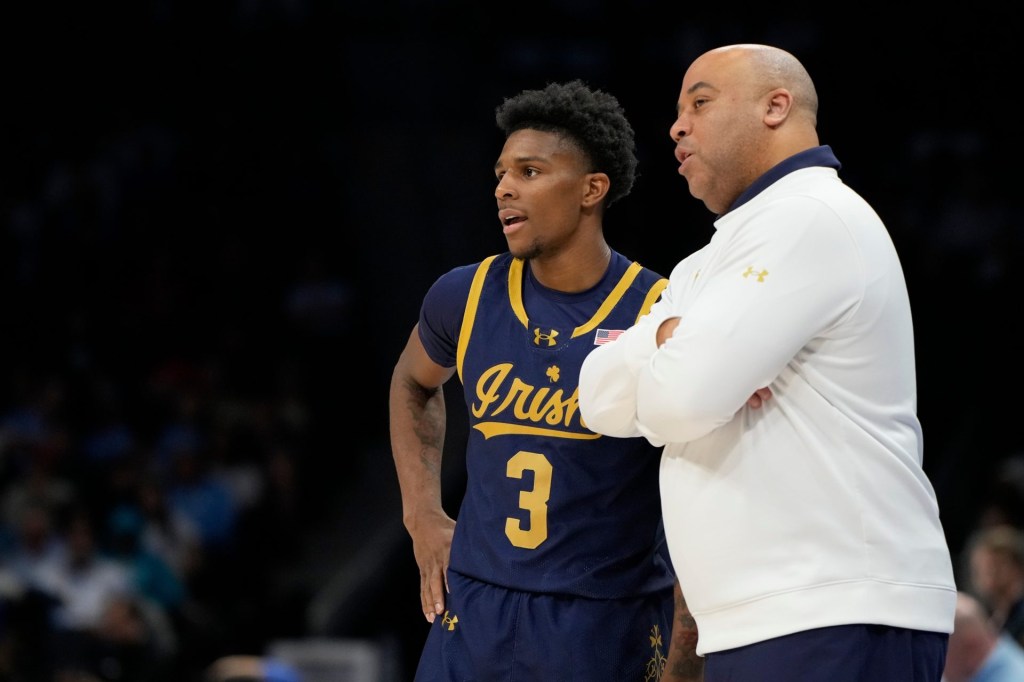
Bob Donnan/Imagn Images
Lendeborg, who signed with Octagon a few weeks before deciding to stay in Ann Arbor, wasn’t the only one Saratsis represents who made that decision. Notre Dame’s Markus Burton decided not to enter the draft at all and play another year with the Fighting Irish. Greek player Neoklis Avdalas reportedly received a second-round grade after entering the draft and opted to withdraw and commit to Virginia Tech.
“Why would we [advise them to declare] when they’ve got an opportunity to make millions of dollars back in college, continue to prove their game, and take control back in their careers?” Saratsis says.
No decision is without risk, of course. A player who stays in school or transfers could lower their draft stock with an unimpressive season, Raymond says. They could also incur a season-ending, or even career-ending, injury. But the prevailing wisdom is to keep players in school for as long as possible.
That doesn’t mean that one-and-dones are going completely extinct, however.
For a select few players, there’s a clear reason to enter the draft after just one year in the NCAA. Cooper Flagg is the No. 1 projected overall draft pick, slated to go to the Dallas Mavericks, after a sensational freshman year at Duke that ended with a heartbreaking loss to Houston in the Final Four. Flagg was likely making millions of dollars between Duke’s nebulous NIL collective and multiple top-tier brand endorsements. But in his first year in the NBA, he’ll earn about $14 million in his NBA salary alone—on top of all his existing endorsements.
“I think there’s going to be at least five to ten players that probably just say, ‘Listen, at the end of the day, I’m going top 10. I’m going to make millions of dollars. I want to play in the NBA,’” Raymond says.
Outside the obvious lottery picks, some players just “really care about the professional lifestyle,” Raymond says. “They don’t care about the money. It’s more about, like, their dreams to play in the NBA. They want to make it happen as soon as possible.” He points to Bronny James, who wanted to play alongside his dad in Los Angeles, as an example.
But those players will continue to be outliers. This year, schools will be able to pay players directly thanks to the House v. NCAA settlement in addition to NIL. Some have raised concerns that, because there’s a cap on the revenue-sharing pool and new restrictions on NIL collective deals, players might end up making less than they did last year (though not everyone agrees that that would be the case). Either way, it will still pay to stay in college—both literally and figuratively.
Says Saratsis: “It’s almost like you’re taking control of your career.”
NIL
Haliburton Says ‘Nothing That’s Happened Before Matters’ After Pacers Force Game 7
Even though the Indiana Pacers kept their season alive with an impressive 108-91 win over the Oklahoma City Thunder in Game 6 of the NBA Finals, Tyrese Haliburton knows it won’t matter if they lose the next game. Speaking to reporters after Thursday’s victory, Haliburton explained “nothing that’s happened before matters” if the Pacers don’t […]
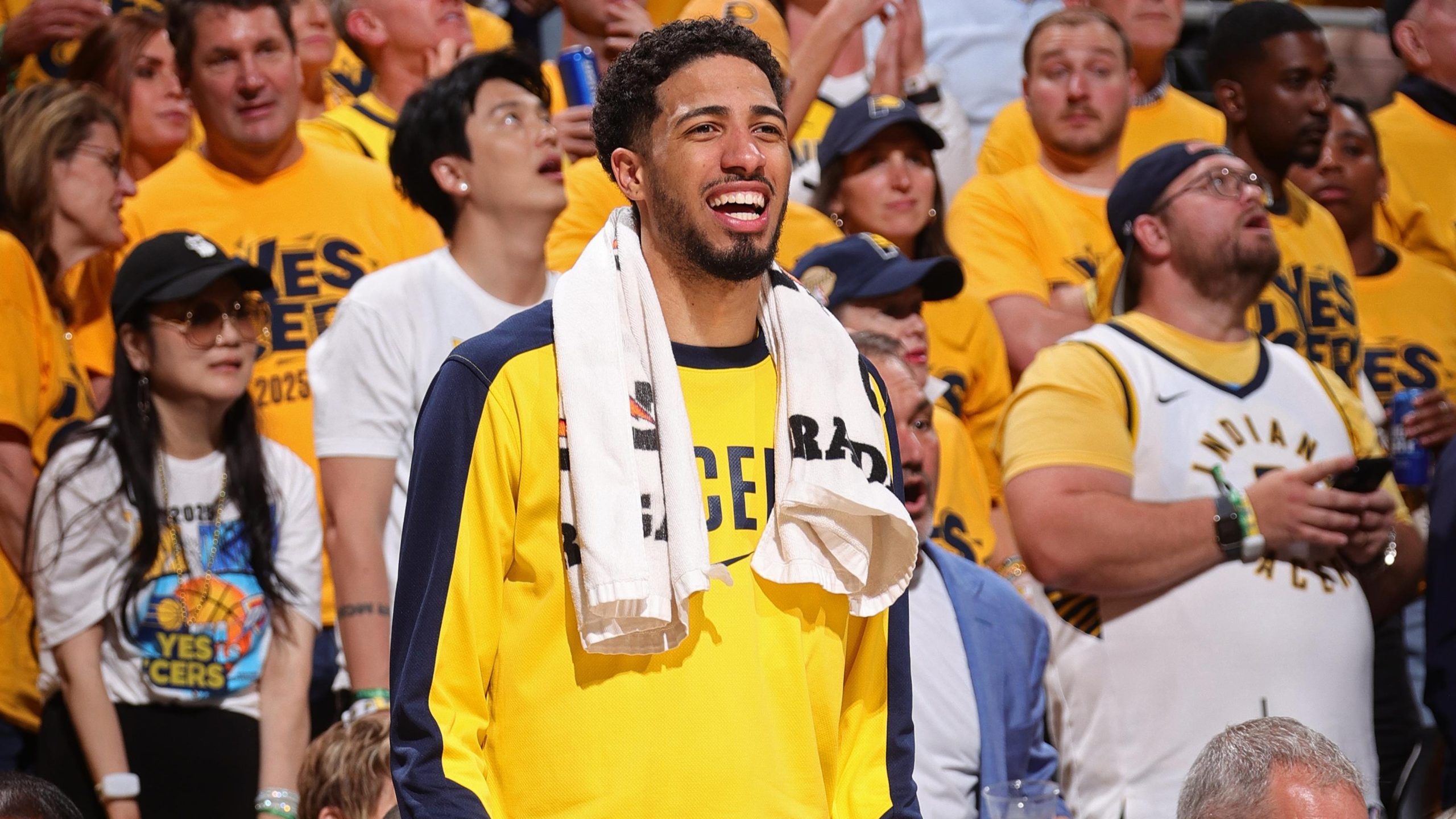
Even though the Indiana Pacers kept their season alive with an impressive 108-91 win over the Oklahoma City Thunder in Game 6 of the NBA Finals, Tyrese Haliburton knows it won’t matter if they lose the next game.
Speaking to reporters after Thursday’s victory, Haliburton explained “nothing that’s happened before matters” if the Pacers don’t win Game 7.
“We’ve got one game,” Haliburton said. “One game. Nothing that’s happened before matters. And nothing that’s going to happen after matters.”
Haliburton went on to say that being part of a Game 7 in the NBA Finals is something he’s “dreamed of” for his entire life (starts at 6:35 mark).
One thing Haliburton won’t be doing in the lead up to Game 7 is following online talking points to avoid the “poison” narratives that could bubble up.
“The next couple of days, the narratives are going to be almost poison,” said Haliburton.
Pacers vibes have been all over the place for the past week. The blown lead at home in Game 4 and tough loss in Game 5 could have signaled an end to his magical run.
Those losses were compounded by Haliburton suffering a calf injury in the first quarter of Game 5 that impacted his performance with just four points on 0-of-6 shooting from the field.
Haliburton was able to start Game 6 after going through pregame workouts. He was a game-high plus-25 in just 23 minutes, scoring 14 points and dishing out five assists.
The Pacers had six players score at least 10 points and their defense forced the Thunder to commit 21 turnovers to earn the win. They are now one win away from the franchise’s first NBA championship.
This will be the first Game 7 in the Finals since 2016 when the Cleveland Cavaliers defeated the Golden State Warriors. The Pacers and Thunder will play their winner-take-all game at Paycom Center on Sunday at 8 p.m. ET.
NIL
Insider Exposes Why House Settlement Won’t Kill NIL Money
The House vs. NCAA settlement, approved on June 6, 2025, has reshaped college athletics with direct athlete compensation and much stricter name, image, and likeness (NIL) rules. In his June 18 Athletic Mailbag, Stewart Mandel shared his thoughts about whether this $20.5 million revenue-sharing cap will replace or supplement existing NIL deals. His analysis explained […]

The House vs. NCAA settlement, approved on June 6, 2025, has reshaped college athletics with direct athlete compensation and much stricter name, image, and likeness (NIL) rules. In his June 18 Athletic Mailbag, Stewart Mandel shared his thoughts about whether this $20.5 million revenue-sharing cap will replace or supplement existing NIL deals.
His analysis explained why the settlement’s attempt to curb NIL money is unlikely to succeed, casting doubt on its long-term impact.
College Football Experts Share Thoughts on Revenue Sharing vs NIL Collectives
Mandel noted that most schools’ collectives fall short of the $20.5 million cap, making revenue sharing the primary compensation method for many. However, for top-tier programs, things are different. Administrators, including Florida basketball coach Todd Golden and Ohio State AD Ross Bjork, claimed the NIL Go clearinghouse, operated by Deloitte, will slash outside deals.
South Carolina’s LaNorris Sellers rejected tempting transfer offers, the college football star’s father says
The advent of name, image, and likeness (NIL) has significantly altered the college sports— Landrover defender (@Landroverdefen9) June 20, 2025
Golden predicted players could earn just “10 to 20 percent” of their recent NIL hauls, while Bjork called collectives a “false market,” which will be similar to pro sports’ smaller NIL deals.
Legal and Practical Hurdles
Mandel argued that the settlement’s two-part restriction of capping school payments at $20.5 million and requiring NIL deals over $600 to be approved for “valid business purpose” and fair-market value will face legal issues.
Over the past decade, courts, including the U.S. Supreme Court, have deemed NCAA restrictions on athlete earnings illegal restraints of trade. Mandel pointed to Texas Tech’s $55 million in NIL commitments, confirmed by booster Cody Campbell, as evidence that schools may exceed the cap.
“Either their payroll is going down by more than 60 percent a year from now, or a judge will have issued an injunction,” he wrote.
Answering one of the reader’s questions, who asked about penalties for improper NIL deals under the College Sports Commission (CSC), led by CEO Bryan Seeley, Mandel wrote that no specifics have emerged about the “substantive” and “severe” penalties that were promised.
Another reader suggested the settlement paves the way for a salary cap, but Mandel countered that this cap, unnegotiated with players, is “legally dubious.” The CSC’s attempt to control the NIL landscape through Deloitte’s oversight assumes compliance that may never become a reality.
With schools like Texas Tech already pushing past the cap, Mandel predicted legal challenges will preserve NIL money’s prominence. The settlement may shift compensation structures, but as Mandel sees it, the lucrative NIL market is far from dead.
-

 High School Sports2 weeks ago
High School Sports2 weeks agoParents Speak Out As Trans Pitcher Throws Shutout In MN State Quarterfinals
-

 Professional Sports2 weeks ago
Professional Sports2 weeks ago'I asked Anderson privately'… UFC legend retells secret sparring session between Jon Jones …
-

 Health2 weeks ago
Health2 weeks agoOregon track star wages legal battle against trans athlete policy after medal ceremony protest
-

 Professional Sports2 weeks ago
Professional Sports2 weeks agoUFC 316 star storms out of Media Day when asked about bitter feud with Rampage Jackson
-

 NIL3 weeks ago
NIL3 weeks agoNCAA Sends Clear Message About Athlete Pay and Roster Limits
-

 NIL3 weeks ago
NIL3 weeks agoMen's college basketball Top 25 reset
-

 Social Media3 weeks ago
Social Media3 weeks agoControversial Athletics Gender Dispute Goes Viral After Riley Gaines Lashes Over Authorities
-

 Rec Sports3 weeks ago
Rec Sports3 weeks ago2x NBA All-Star Reacts to Viral LeBron James Statement
-

 College Sports2 weeks ago
College Sports2 weeks agoOKC’s Mark Daigneault knows what it takes to win championships. His wife has won a ton of them
-

 Motorsports1 week ago
Motorsports1 week agoNASCAR Weekend Preview: Autódromo Hermanos Rodríguez































